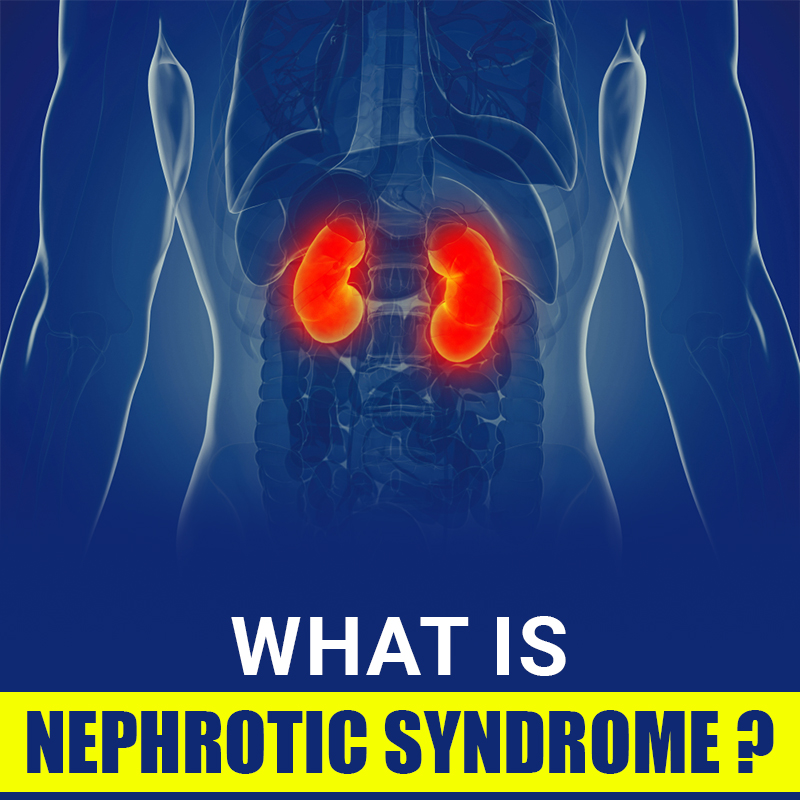Everything You Need To Know About Nephrotic Syndrome In Children
Nephrotic syndrome is a condition that forces the kidneys to expel large amounts of protein into the urine. Losing protein can be lethal as proteins are the building blocks of the body. On them, our body is dependent on fulfilling functional requirements such as fighting against infections, keeping bones healthy and blood pressure under control, etc. As you lose protein during nephrotic syndrome, a panoply of problems, including swelling of the body tissues and greater chances of developing infections elevate.
Nephrotic syndrome is common in children between 2 and 5 years old though it can affect people of any age. If we talk about gender, it affects males more than females. Yearly, 1 in every 50,000 children gets affected with nephrotic syndrome. So, essentially nephrotic syndrome in children should be treated with ayurvedic treatment.
Childhood nephrotic syndrome is not a disease in itself; rather, it is a group of symptoms that signifies:
- A high amount of protein in the urine (proteinuria)
- Low levels of a protein called albumin in the blood (hypoalbuminemia)
- High cholesterol and triglycerides in the blood (hyperlipidemia)
- Swelling in the lower extremities or around face and eyes (edema)
There are two different types of childhood nephrotic,
- Primary—the most common type of childhood nephrotic syndrome, which begins in the kidneys primarily.
- Secondary—the syndrome affects other organs, and then your kidneys.
What Problems Can It Cause?
Most people with nephrotic syndrome have their symptoms remain stable (remission) followed by symptoms relapsing.
As with age, the relapses become less frequent, often stop by the time they reach their teens. Primarily signs associated with nephrotic syndrome include:
Swelling – The level of protein in the blood restricts the flow of fluid from the tissues into the blood vessels. This fluid pool in the tissues results in swelling. At first, swelling can be seen around the eye and then in the lower extremities, such as around the legs, ankles, and later, on the rest of the body.
Infections – Albumin protein helps the body fight against various infections. When protein is lost, children are much likely to get infections after nephrotic syndrome.
Urine changes – Occasionally, the high urine albumin level can make the urine a little frothy. Some children with nephrotic syndrome may pass little urine than normally they do. It happens at the time of relapses only.
Blood clots –The loss of albumin hampers the blood clotting process during nephrotic syndrome. It may potentially elevate the risk of serious blood clots in the body. During a relapse, the blood thickens or concentrates, which leads to blood clots.
Hence, it is critical to get the right treatment at the right time to prevent serious stages later in life. Occasionally, nephrotic syndrome may progress to kidney failure. So, better take precaution with the help of Ayurvedic medicine for nephrotic syndrome.
What Are The Causes Of Nephrotic Syndrome?
Most children with nephrotic syndrome develop minimal change disease. Minimal change disease means the tissues in the kidneys appear relatively normal under a microscope. But if examined under the electron microscope, minimal changes can be seen in the tissue sample. Scientists do not know the cause of minimal change disease yet.
Nephrotic syndrome can sometimes occur as a result of a kidney problem or another condition. They are known to be the secondary causes of nephrotic syndromes, such as:
- Glomerulosclerosis – When the filters of the kidney called glomeruli become scarred
- Glomerulonephritis – Inflammation of the glomeruli.
- An infection – Such as HIV or hepatitis
- Lupus is an autoimmune disease
- Diabetes
- Sickle cell anemia
- Certain types of cancers such as leukemia, multiple myeloma, etc. can also contribute to the nephrotic syndrome in adults
Diagnosing nephrotic syndrome
Nephrotic syndrome can be diagnosed with the help of a dipstick test after checking for a urine sample. The dipstick is a chemically coated paper that can change color when albumin is present in the urine.
A blood test showing less protein in the blood also indicates nephrotic syndrome.
Additional testing may include a kidney biopsy to know the cause of the nephrotic syndrome; in case the treatment did not work on the child.
Managing nephrotic syndrome
You can manage nephrotic syndrome with the help of ayurvedic medicine for nephrotic syndrome and making some dietary changes.
Diet
Diet is helpful in the management of nephrotic syndrome. To get the best results, make sure your child eats to reduce swelling and manage blood pressure at the same time. The doctor may suggest drinking less fluid than normal to prevent swelling.
During nephrotic syndrome, the cholesterol and triglycerides levels also level up, so try to induce a diet that is low in cholesterol and cut down saturated fat from your child’s diet. This will even subdue the risk of heart and kidney-related disorders.
Although at this time, the body is losing protein from the body, do not push them to an extra protein diet. A diet rich in protein can worsen his or her condition.
Ayurvedic Medicine For Nephrotic Syndrome
Nephrotic syndrome in children is treated with the help of ayurvedic treatment. This is the right treatment for a child because muscles and bone grow at this tender age. Losing protein may push them to serious complications. Steroids are not an option for them as this will add to the threat to their health.



Comments
Post a Comment